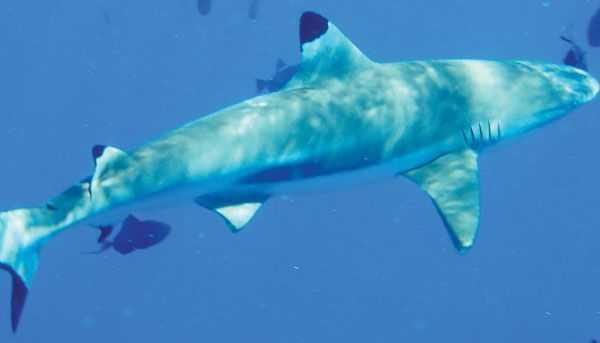Where have all the big guys gone?
We all know nature hates a vacuum, and she’s almost as picky about trophic levels in ecosystems. Which brings up an interesting situation in the Gulf of Mexico.
During the late nineteen eighties and nineties, the commercial shark fishery hit the Gulf shark stocks pretty hard. And the impact was noticed in the major tournaments around the Gulf: Dauphin Island, Mississippi, and Texas. Suddenly those heavy weights were missing from the leaderboards. What was often common, like 400 pound bulls, six hundred pound tigers, and 12 foot hammerheads, suddenly became a rarity, or were missing from the weigh stations altogether.
Now sharks are at the apex of the trophic level, the very top of the food chain. But unlike the bony fishes, sharks are slow to reproduce. Most species have small litters, a dozen or so, and they take several years or more to reach sexual maturity. So when they got slammed a couple of decades ago, the near void they left behind has taken a while to come back.
But there are many species of sharks in the Gulf and many are small like Atlantic sharpnose, blacknose, spinners, blacktips, finetooth, to name a few. Almost all of these smaller guys have shorter life cycles than their larger cousins, but they are top predators also. So one would expect that these species would take advantage of that vacated trophic level with the abundant resources available, and experience a really rapid population increase, if not an explosion.
Shift now to our many tuna fishermen. They are telling me that the sharks are so thick around the rigs, that’s it’s tough to get a bait to the tunas. There seem to be plenty of tunas, but the smaller sharks are there in droves.
This is all speculation on my part, based on anecdotal observations. But let me offer a few predictions that may eventually support this speculation. I think the big guys with the larger litters (like tigers that can have litters approaching 50) are going to rebound, given time to pass through a couple of generations. I think other top predators, like tunas and king mackerel, are going to maintain very strong stocks, despite pretty intense fishing pressure. And finally, I think we will start seeing those 400 pound plus monsters start showing up again as nature reestablishes its balance.
One caveat. As fishermen, we need to learn to ID sharks. It’s not that tough, but since many species are protected (e.g. sandbars, silkies, duskies) it has almost become a necessity. There are many identification guides available. Of course I’m biased, but my Guide available at bobshipp.com makes shark identification easy.
[easy-social-share]
